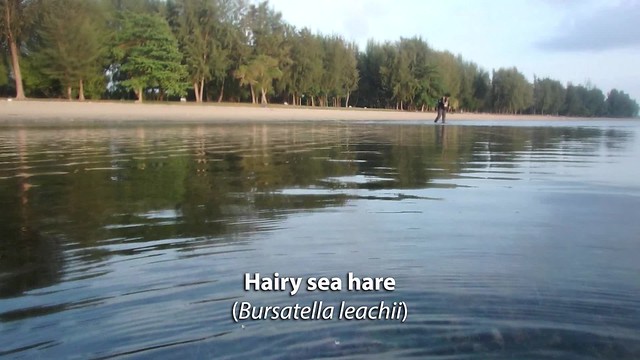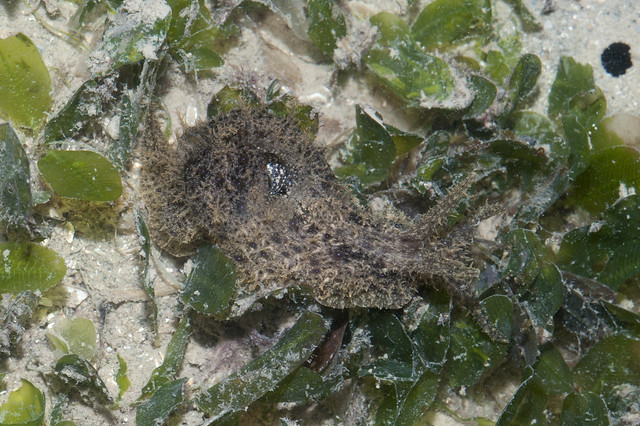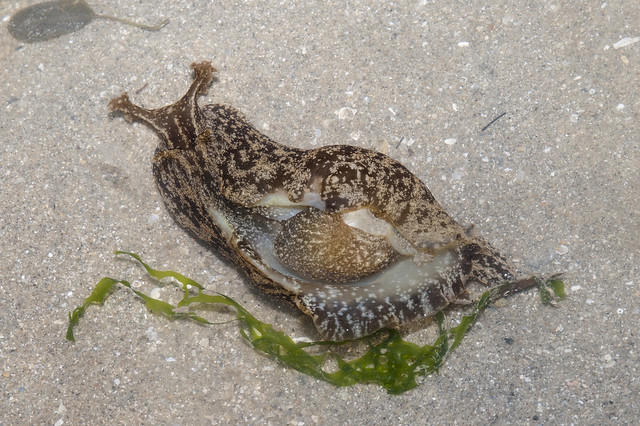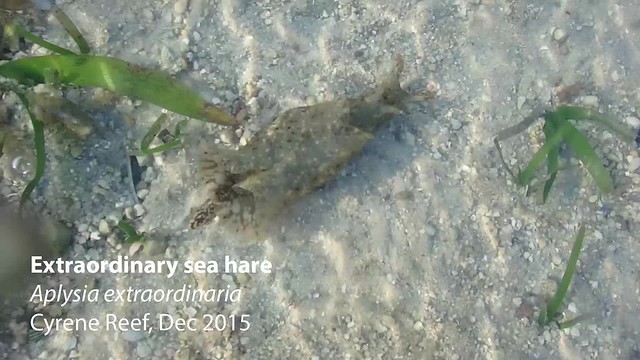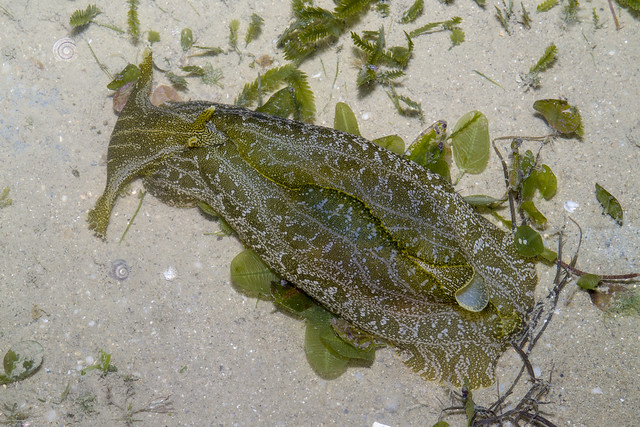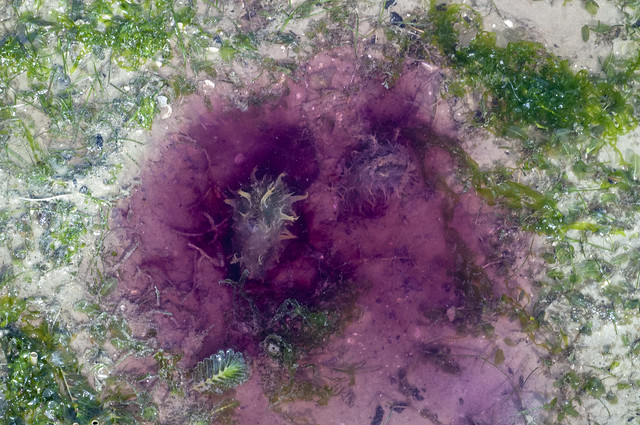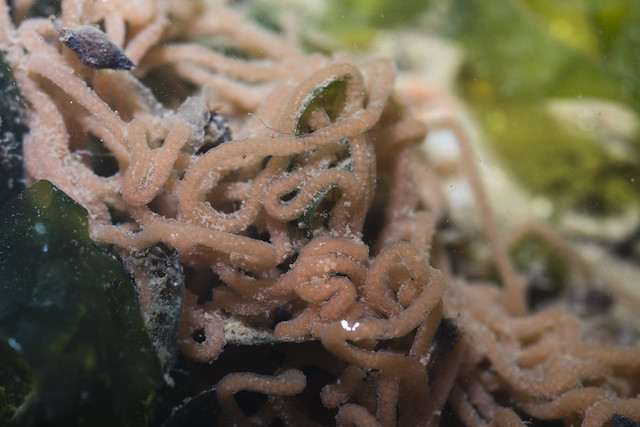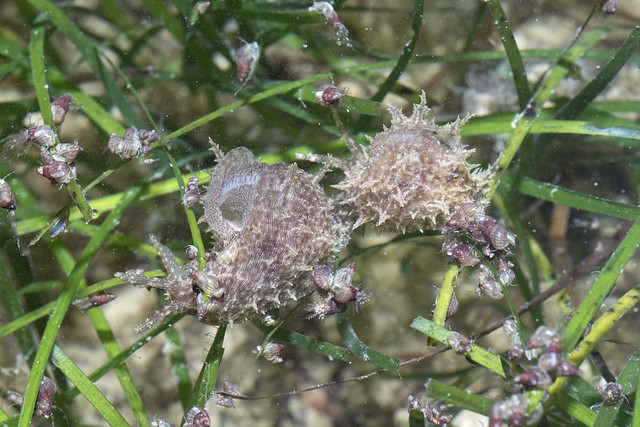Grazing among Singapore's seagrass meadows are large slugs called sea hares.
Several different kinds occur on our shores. Although they are easily overlooked, despite their large size. Many, like these Hairy sea hares hardly look like animals! Why are they called hares? Why do they release hare dye? How can I see them?
Why are they called hares? Perhaps because sea hares do move rather quickly, for a slug. With some imagination, the flappy tentacles on their head do resemble the ears of a rabbit. Also, they are herbivores, grazing seaweed. Sea hares often match their food, in colour and sometimes, texture as well. The Hairy sea hare is usually only spotted when it moves!
Some of them are even 'furry', like the Furry sea hare is another kind that has finer 'hairy' bits sticking out of its body.
Sea hares are molluscs, like snails and clams. Like many other sea slugs, sea hares lack external shells as adults, though some have a small, thin shell just under the skin. The egg-shaped thing in the middle of this Spotted sea hare is where its internal thin shell is.
Sea hares have two pairs of tentacles. The front pair (called oral tentacles) are next to the mouth and usually large and fleshy, sometimes with flaps. The second pair (called rhinophores) is further behind on top of the 'head' and usually smaller. Sea hares have a pair of 'wings' or flaps (called parapodia) that cover the centre part of the body. Some sea hares can swim by flapping their parapodia. Sometimes, the inside of the flaps have startling patterns, like in this Black-tailed sea hare.
Here's an Extraordinary sea hare flapping its 'wings', showing startling patterns on the inside and exposing the small, thin shell in the middle of the body. It can also crawl rapidly through the seagrass meadows. Sea hares are NOT nudibranchs, which belong to a different group.
The Geographic sea hare can be large and has fine lines along its body.
At low tide, the Geographic sea hare is often seen burrowed into soft silty sand.
Hare dye: Some sea hares produce a purple dye when disturbed, like this pair of Hairy sea hares. The function of this dye is not known. Unlike an octopus or squid, it doesn't form a screen for a quick escape as most of these slugs usually don't move very fast. One study found that the dye irriates other animals such as crabs, sea urchins, fishes and bristleworms. It is believed that the dye is a by-product of the seaweeds that the sea hare eats.
Hare today, gone tomorrow! Sea hares appear to be seasonal. Sometimes they are everywhere, at other times, none are to be seen. A cluster of large sea hares, like these Spotted sea hares, suggests mating is going on. Sea hares are hermaphrodites, each animal having both male and female reproductive organs. They exchange sperm, lay eggs and die soon there after.
These are egg strings probably laid by the Geographic sea hare.
An explosion of tiny Furry sea hares. A new generation of sea hares?
Some sea hares are tiny even as adults. Like this Seagrass seahare which is almost transparent with fine white lines that match the veins of the Tape seagrass that it lives on. It doesn't eat the seagrass but grazes stuff that grows on the seagrass blade.
Where can I see these animals in Singapore?
One of the best ways is to join intertidal walks by NParks at Chek Jawa, Pulau Ubin or the Sisters Islands Marine Park. Or check out these opportunities to explore our shores through walks, or during volunteer work for our shores.
Here's more about Singapore's seagrass meadows and how you can visit them and make a difference for them.
Learn more about Singapore's sea hares on the wild fact sheets on wildsingapore.
This article is written for Celebrating Singapore Shores as part of International Year of the Reef 2018.


